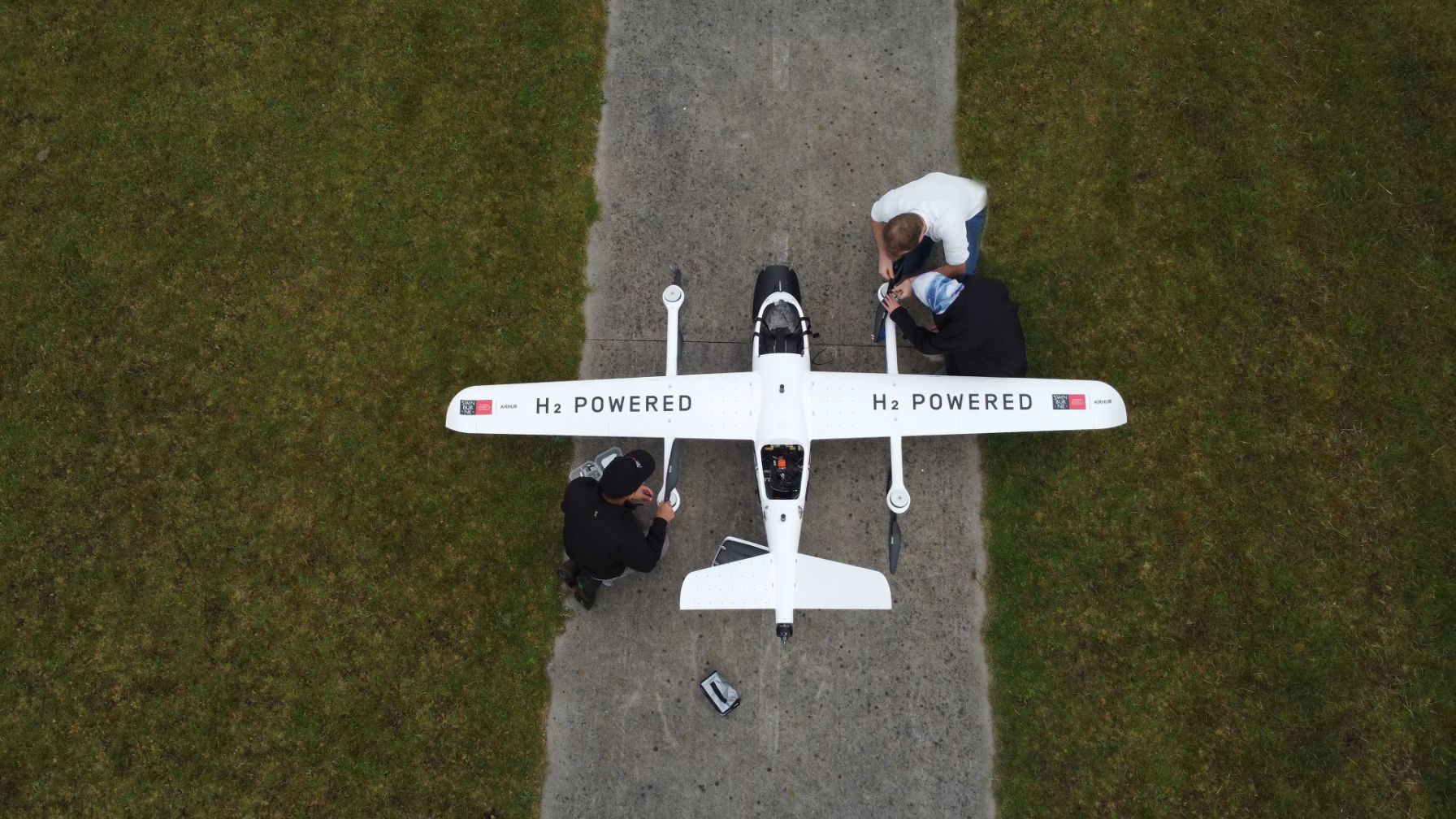
Australia’s Swinburne University of Technology’s Aerostructures Innovation Research Hub (AIR Hub) has completed the first flight of an Australian-developed hydrogen fuel cell electric powered VTOL drone. The flight test was achieved using AIR Hub’s innovative Small Hydrogen Aircraft Development & Evolution (SHADE) drone.
“This flight marks a significant milestone in Australia’s advanced air mobility (AAM) journey as the first electric vertical take-off and landing (eVTOL), hydrogen-powered uncrewed aerial system (UAS) flight,” said a university press release. “The successful flight is the result of collaboration with industry partners, researchers and businesses across the aviation and hydrogen industries, including Swinburne’s Victorian Hydrogen Hub (VH2).
“The SHADE drone was developed through AIR Hub’s Hydrogen to the Skies (H22S) project, funded by the Australian Commonwealth Government’s Emerging Aviation Technology Partnerships program. The aim of this project is to design and integrate a new hydrogen propulsion system into a large-scale drone to help spearhead the commercial development of clean, zero emissions uncrewed air systems.
“The flight occurring last week in Victoria’s Latrobe Valley was the first of its type in Australia. It demonstrates a leap forward in clean aviation, enabling extended range compared to traditionally battery powered UAS, while reducing the environmental impact through sustainably produced hydrogen. This achievement demonstrates Swinburne’s commitment to developing sustainable aviation technologies.
“The successful hydrogen-powered flight of the SHADE drone represents a significant milestone in not only the H22S project, but also the development of net zero aerospace in Australia,” says Dr Adriano Di Pietro, Director of the AIR Hub.
“The success of a hydrogen-propelled flight of the SHADE drone is a significant milestone in the first phase of the multi-phase H22S project. This will position Australian aerospace and aviation companies to scale up hydrogen use in aviation, with a view to utilise hydrogen propulsion progressively from UAS all the way to passenger and freight air vehicles. Research being completed by the AIR Hub also speaks to the potential to convert existing internal combustion powered aircraft into emission-free flight.
For more information
https://www.swinburne.edu.au/news/2023/10/Swinburnes-AIR-Hub-achieves-hydrogen-flight/


